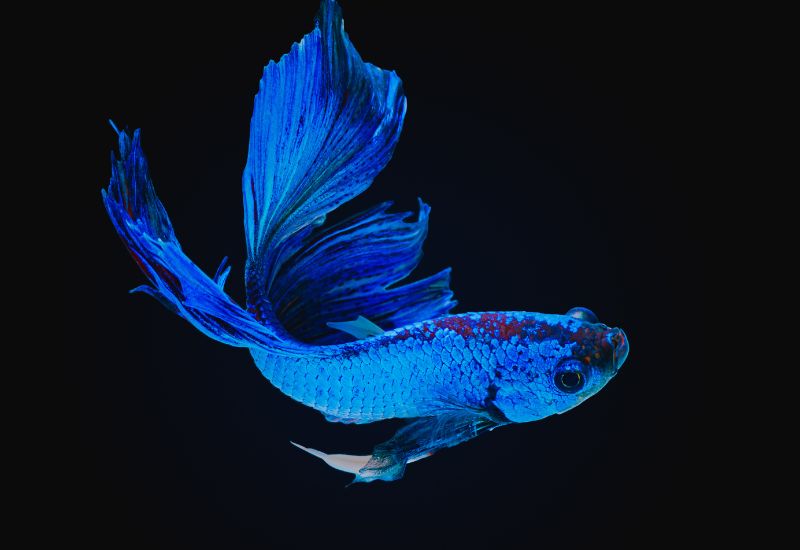Siamese fighting fish, commonly known as betta fish, are famous for their color variations and low maintenance. Betta fish are native to Thailand. For new aquarists, starting with a betta fish is a good option.
Betta fish are easy to care for and require less attention and good water quality. Poor water quality not only deteriorates the tank environment but can severely damage the health of the fish.
Lack of knowledge regarding your fish’s behavior, water preferences, eating habits, tank mates, and tank environment can cause significant health problems. In this article, you will learn everything regarding betta fish.
Characteristics
| Common Names | Siamese fighting fish |
| Scientific Names | Betta splendens |
| Family | Gourami |
| Number of Species | 76 |
| Size | 2.5 inches |
| Water Type | Dechlorinated water |
| Water pH | 6.8 to 7.5 |
| Temperature | 76° F to 85° F |
| Native Area | Thailand, Cambodia, Malaysia, Indonesia |
| Food Preferences | Live prey, pellets, brine shrimp, small meat food |
| Behavior | Aggressive, Curious |
| Life Span | 2-5 years |
| Colors | Available in 18 colors |
| Social | It can be with specific species |
| Tank Level | 5 gallons |
| Minimum Tank Size | 3 gallon |
| Care | Easy to care, Low maintenance |
Betta fish are common house pets because of their beautiful appearance. Betta fish can be found around the world in pet stores. A total of 76 species of betta fish have been discovered. In the wild, the fish live in thick, overgrown water pounds or where the thickness of plants is high.
Betta fish are slow-water fish that cannot survive in high water currents. The length of the fish can be upto is 7.5 cm. The body of the betta fish is covered with the scales like shingles. The scales consist of thin plates that protect betta fish bodies from injury.
An extra muscle layer also covers the scales, protecting the fish from parasites. In the wild, they do not have vibrant colors like red or blue.
In the wild, they are dull and use their color for mating or to ward off predators. In captivity, bettas have more vibrant colors and display them as an advantage for mating. Fish normally swim on the surface due to territorial issues.
The fish is aggressive but more reluctant towards its species. The fish can fight due to different reasons. Betta likes to establish territory over food and shelter and to access females. We can not keep two male bettas in one tank. They will fight for territory until one is dead.
Female Betta Fish
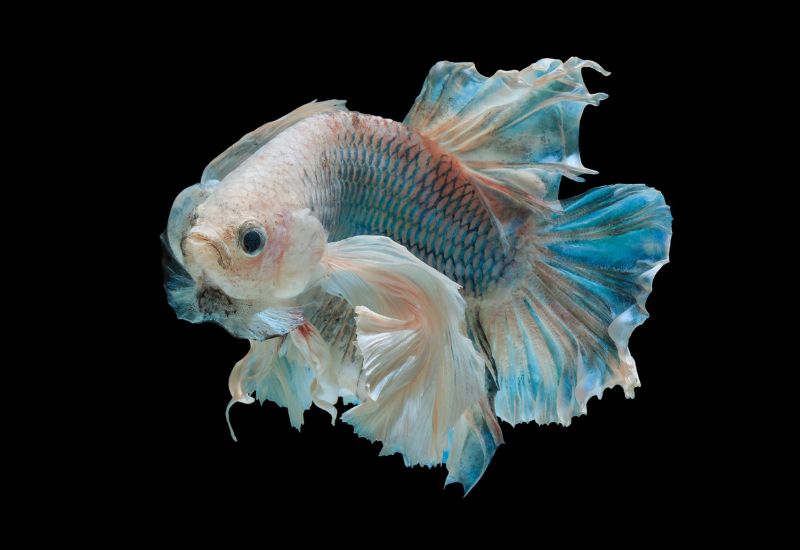
Female betta fish are small in size as compared to males. Females have less elaborate caudal fins. The behavior of female betta fish distinguishes her from the male. Female betta fish are a little submissive and can live in sororities with other females. There is an ovipositor in a female’s egg-laying tube. Females have small beards. Female betta fish do not build bubble nests.
Male Betta Fish
Male betta fish are big and have more vibrant colors than female betta fish. The male betta is aggressive and can not live with another male in the tank. They make bubble nets and flare their fins and tails to attract the female.
Female Vs. Male Betta Fish
Females have flat bodies, whereas males are big. Female betta fish have small, flamboyant fins. In comparison, males have more visible tails, dorsal fins, and anal fins. Male betta fish swim slowly, whereas female betta fish swim fast.
Male betta fish have more vivid and vibrant colors to attract females. In comparison, females are not that vibrant and have fewer color spots on the skin. Male betta fish build the nest and guard the babies until they can freely swim. Females take no part in the rise of fry.
Types of Betta Fish

Betta fish types have reached 76 because of different breeding patterns in captivity. They are differentiated on the base of color and fin designs. Here are the most common types of betta fish:
Veiltail Betta
Veiltail betta is the most common type among aquatics. The fish is a freshwater fish and is famous for its shimmery translucent tail. The veil-tail betta is less aggressive than other species of betta fish. But he is quite aggressive towards their species. You cannot keep two male bettas in one tank.
Combtail
Combtail betta is a beautiful and famous addition to the aesthetic of the aquarium. The cocktail betta’s appearance looks like the cross between half-moon and crown bettas. The cocktail betta fish have beautiful appearance features of fin and tail that give them a spiky look. Cocktail betta fish comes in all popular colors like blue, orange, black, and many more.
Crowntail
The fish is a perfect center of attention due to its blue caudal fin and huge fins. The crowntail species are not old but have gained attention due to their vibrant and beautiful appearance. The spiky edges of the fin provide a crown-shaped look. The size of the fish is 2.5 inches but it can grow up to 3 inches.
Spade Tail Betta
The fish is famous due to its unique tail style. The spade tail betta is the cross of half moon betta and veil tail betta. The spade tail betta is available in different beautiful colors, but red and blue are common. The size of the fish can be 3 inches. Males are larger than females.
Double Tail

The double-tail betta is famous because of their big tail. The tail provides the look of a double tail. The name double tail confuses people. Fish don’t have two tails; there is a split in the tail that demonstrates the look of a double tail. The fish have beautiful fins and should be kept with the fish who will not attack their delicate fins.
Halfmoon Betta
Halfmoon betta are famous for their beauty and aggressive behavior. They will attack any other male betta for invading their territory. The fish can live with the same species of female but a tank only to themselves keeps them happier. Halfmoon Betta comes in so many different colors. The males are more vibrant than the females.
Delta Tail
The delta fish are beautiful and have large fins and tails. The fin of the delta tail betta doesn’t reach the mark of 180° like the halfmoon betta. The size of the fish can be 2.5 inches. The fish comes in so many different colors.
Half Sun
The half-sun betta is a beautiful fish introduced in 2013 as a result of breeding. The difference between half-moon and half-sun betta fish is the outer side of the tail. The half-sun betta is the result of the half-moon betta and crown tail. The fish comes in beautiful fiery red, blue, yellow, and even pastel colors.
Black Orchid Betta
Black orchid betta is a freshwater fish famous for its beautiful color. The black orchid betta is a result of selective breeding in captivity. The color of the fish is dark black, but some fish are reddish and blue-green. The size of the fish is 2.5 inches, but their huge fins make their size bigger.
Marble Betta
Marble Betta is famous for their beautiful marbling skin. The fish have jumping genes that give them the capability to change colors over time. The fish comes in different beautiful colors including red, blue, and green.
Elephant Ear Betta Fish
Elephant ear betta fish are beautiful, having a slim body and large pectoral fins. The fish comes in different beautiful colors like green, blue, and purple. The fins of this fish can grow twice larger than their own body. Their huge fins and tails resemble those of elephants. Males are bigger and more vibrant as compared to females. The lifespan of the fish is 3 to 4 years.
Diet

Betta fish are naturally carnivores. In the wild, betta fish consume insects and insect larvae. The food you provide to your betta fish makes sure it’s high in protein and fiber. When buying fish food, check the ingredients to see if they have shrimp and krill. There are different types of food that you can feed to your betta fish:
Flakes and Pellets
Flakes and pellets are the most common staple food due to their easy availability. The flakes you feed to your fish float on the surface. Flakes sink in after some time so watch the amount of food you are feeding. Overfeeding can not only cause health problems to your fish but it causes the buildup of harmful chemicals in the water.
Pellets are most common to feed. There are two types of pellets, one that floats on the surface and another that sinks. Feed your fish according to their preference.
Freeze Dried Food
Freeze and fried food can not work as a staple food. You cannot feed frozen food to your fish every day. It can cause bloating and constipation in the fish. Once or twice a week this meal is fine.
Frozen and Live Food
Frozen and live food is the best option for your betta fish. In the wild, betta fish eat live food. In the aquarium the live food not only provides the natural environment but it will increase their instincts of hunting. Before giving live food, make sure it is clear of any parasites. Some people grow live food on their own to feed their betta fish.
Popular Food For Betta Fish
- Brine shrimp
- Bloodworms
- Daphnia
- Wingless fruit flies
Breeding and Early Development
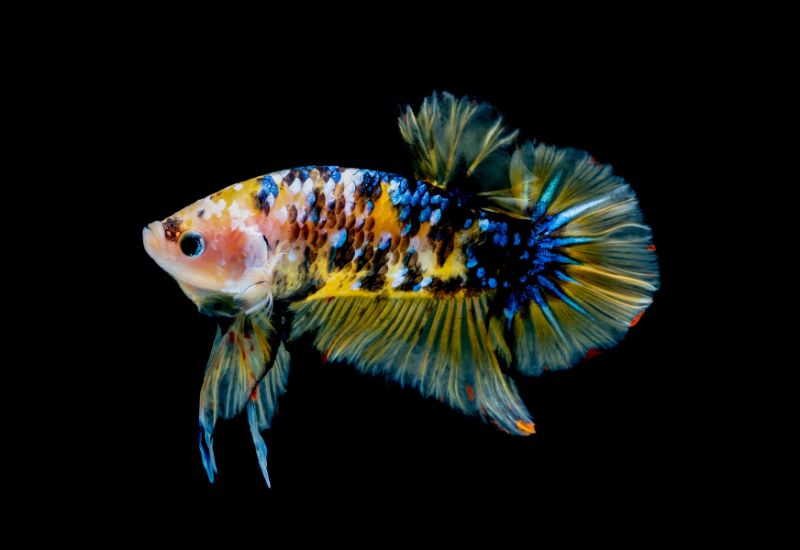
Breeding of betta fish is easy if you follow the right steps. Here are the details:
Select the Tank
For the breeding of betta fish, you need to set up a separate tank for males and females. The capacity of the tank should be at least 20 gallons. This is the tank where fry will live after some weeks of hatching. Make sure you have perfect water parameters as per the preference of your fish.
Select the Pair
Select the happy and healthy fish for pairing. Choose the fish with vibrant color and healthy fins.
Conditioning
Provide the pair of betta fish with high-quality food. Live food or frozen food are both good options. Bloodworms, brine shrimp, and daphnia are best two weeks before breeding. You can try other betta fish foods, which are high in protein. Provide your pair with good water quality by maintaining the temperature from 70° F to 80° F to encourage a breeding environment.
Tank Preparation
To encourage breeding, you can add live plants to the tank. For example, java ferns will provide the hiding spots for the fish. Add the salt or chlorine to the water and add ketapang leaves. They can be floating on the surface or can be smudged in the water.
After the 34 hours of tank setup, you can add the male betta. He will start making a nest. You can add the female then.
Adding Female
Place the female in a separate container where the male can see her directly. This will reduce aggression. The male will create the bubble best to attract the female. You can release the female in the tank after 24 hours.
Observation
After you release the female into the tank monitor their behavior. Look for male courtship behavior. That includes the building of a bubble nest and flaring of fins to attract females.
Remove the Female
After 48 hours, remove the female from the tank. If the female has not laid the eggs, still remove the fish to protect her from the male’s aggressive behavior.
Stages of Betta Fish Life
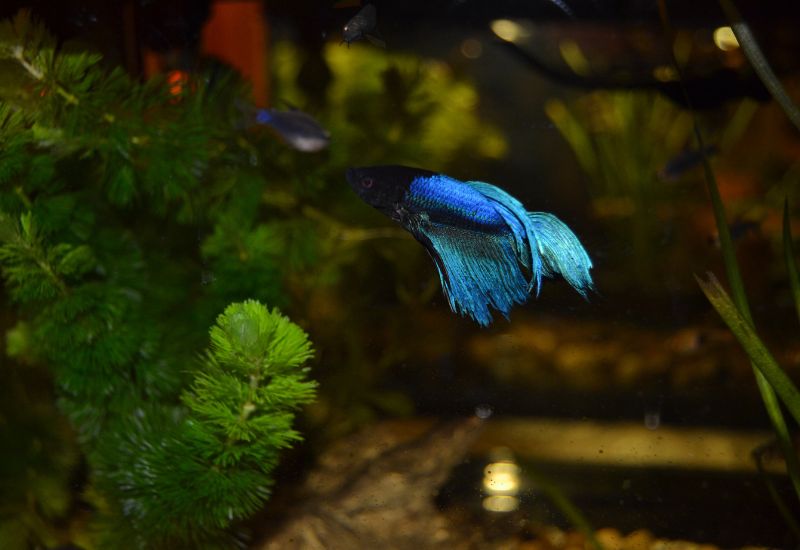
Here is the development journey of betta fish:
1- Egg
Once the female lays the eggs, the eggs are well protected by the male. The eggs are in the form of a cluster and are white and translucent in color. There i a black mark on the eggs which are embryos. The survival of the eggs depends on the male’s ability to protect them from any predators. The water conditions play a crucial part in the hatching of eggs. If the water parameters are not right the eggs will not grow or hatch.
Betta fish need a water temperature between 27° C to 30° C for the hatching of eggs. There should not be any ammonia and nitrite in the water. You can check the water by testing it.
2- Fry
After hatching, the little betta babies are called fry. For good growth, fry needs good water conditions and a stress-free environment. At the start, fry depends on their own yolk sec. Use a stone or air sponge filter to provide the oxygen, as the labyrinth organ is not fully developed in the fry.
3- Juvenile
As a juvenile, fish face a lot of physical changes in their body. The fish start to exhibit coloration and behavioral characteristics. Juvenile fish need extra care and proper food. You can use dry or frozen food.
4- Young Adult
At the age of 2 months, the betta attains sexual maturity. You can separate the female betta and male betta. Provide them with good food and environment for a long and healthy lifespan.
5- Mature Adult
The betta fish become young adults at the age of 7 months. It’s the time when their colors are at their peak. They showcase their vibrant colors throughout their life. Monitor your fish’s health to provide a happy long-lasting life.
Betta Fish Tank
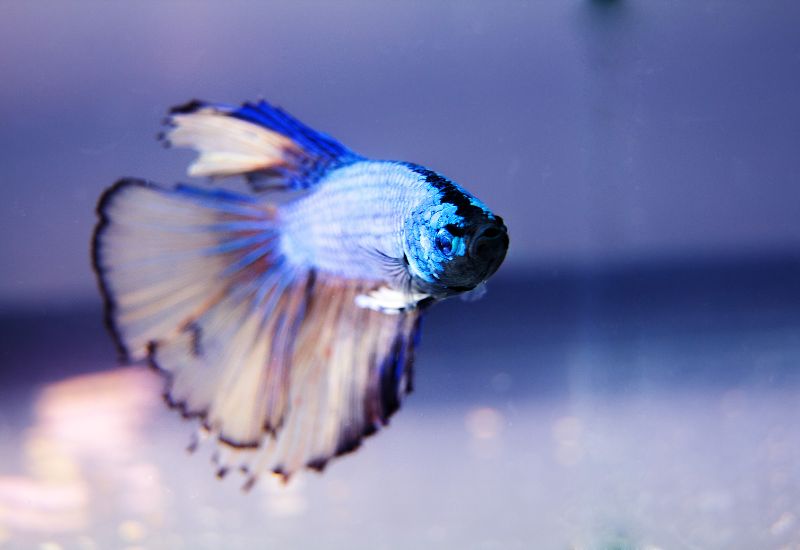
Here is the equipment you need for the betta fish tank:
The Aquarium
For betta fish, people have the misconception that betta fish can live in a small container. Fish need space to swim and explore. A tank with a capacity of at least 5 gallons is required. It is necessary to place a lid on the surface of the tank because the fish tends to jump. Two betta males cannot live together due to territorial issues. Keep only one betta male in the tank.
Filter
Install a good-quality filter in the tank. The filter not only disposes of biowaste and harmful chemicals but keeps the water clean. Betta fish is a low-maintenance fish but they need good quality water for good health. Betta fish are slow swimmers. Install a filter where fish can control the water flow rate. The high current of water can damage their delicate fins.
Water
Betta fish need high-quality water. Make sure the water is free of ammonia, nitrite, and nitrate. Use dechlorinated water. Pet shops sell dechlorinator water. You can buy from them.
Decor of Tank
Use the freshwater substrate for the tank’s decoration. The tank should have a substrate layer about 2 inches thick. For every ½ inch of substrate, about 1 gallon of water is needed. The tank should be 2 inches covered with the substrate. Betta fish are aggressive and like to hide. Make sure to add rocks and caves. Add live plants. You can add artificial plants, too, but make sure they do not have sharp ends.
The Ideal Temperature For Betta Fish
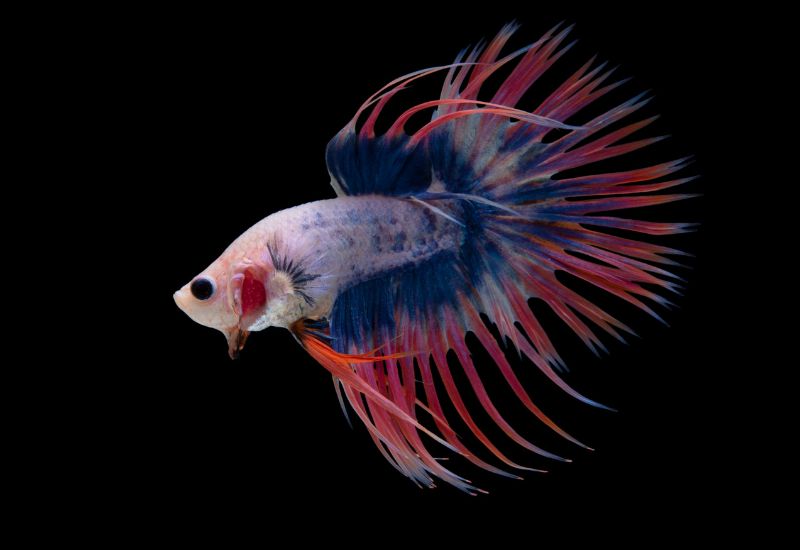
Betta fish is the fish of Southeast Asia. The water temperature there is a little warm as compared to room temperature. The ideal temperature for betta fish is 75° F to 80° F. The pH of the water should stay 6.5 to 8. Here are the ways you can maintain the ideal water temperature for your betta fish:
Use Aquarium Heater
Buy an aquarium heater for the fish. Betta fish need a temperature between 24° C and 27° C. The heater will maintain the water temperature to the preferred parameters. The heater controls the temperature by warming up the water with the help of a built-in thermostat. You can adjust the temperature to a specific temperature as per the needs of your fish. Keep other fish in consideration while living in the same tank, and set the water temperature to one suitable for all species you have.
Do Not Place the Aquarium in Direct Sunlight
Do not place the aquarium in direct sunlight. Whether you have a heater, or direct sunlight can fluctuate the water temperature of the tank. Sunlight increases the water temperature by heating it up and cooling it down at night. Betta fish can not tolerate high water fluctuation.
Install Insulation
Once your tank is safe from direct sunlight and your temperature is maintained, install insulation. The insulation will maintain the water temperature and will prevent unnecessary noise from the outside. This will provide a peaceful environment for your fish. Place a lid on the surface of the tank. That will control the loss of heat from the tank. You can use a styrofoam sheet as a cover.
Thermometer
To maintain the best water temperature for your fish you need to check it daily. For that, you need to have a thermometer. You can check water parameters daily and can adjust the water temperature as needed.
Use a Filter to Circulate Water
Filter in the tank to ensure the circulation of the warm water across the tank. In a tank, the water temperature can change in some areas. The filter will not only clean the water but keep the water warm all over the tank. This will provide a comfortable living space for your fish.
Betta Fish Tank Mates

Betta fish are aggressive because of their territorial issues. We cannot keep two males in one tank. They will fight until one is dead. But we can keep them with some species of fish who can perfectly cohabitate with betta fish:
Harlequin Rasbora
The scientific name of the fish is Trigonostigma heteromorpha. This fish can live perfectly with betta fish. Betta fish swim slow whereas the harlequin rasbora is fast fish. There is no fear of being attacked by betta fish. Both fish share food and environmental similarities.
Ember Tetra
The fish is scientifically known as Hyphessobrycon Amandae. The fish is calm and comes in a beautiful orange color. This fish likes to live in a group of 6 or more, depending on the size of the aquarium. The fish like to swim in the middle of the tank, mostly around the plants; however, betta fish like to swim on the surface. Both fish can perfectly cohabitate
Platy
The fish is calm and grows up to 1.5 inches to 2.5 inches. The fish is energetic and needs space to swim. Make sure the tank is big enough so the fish won’t get in the way of betta fish. The fish like to stay in a group of 4 or more. The fish can be aggressive while eating to make sure your betta is getting sufficient food.
Shrimp
You can keep various types of shrimp with your betta fish. Including amano shrimp, red cherry shrimp, and ghost shrimp. Shrimp like to stay at the bottom of the tank and eat the fish’s uneaten food. The shrimp also like to eat algae. They will not only provide company to your betta fish but will keep your tank clean.
Snail
Snails can perfectly live with betta fish. You can add apple snails, turret snails, and Mystery Snails. They come in different beautiful colors and can increase the aesthetic of your tank. Apart from their food, snails like to eat the uneaten food of the fish and algae from the bottom of the tank.
Do Betta Fish Sleep
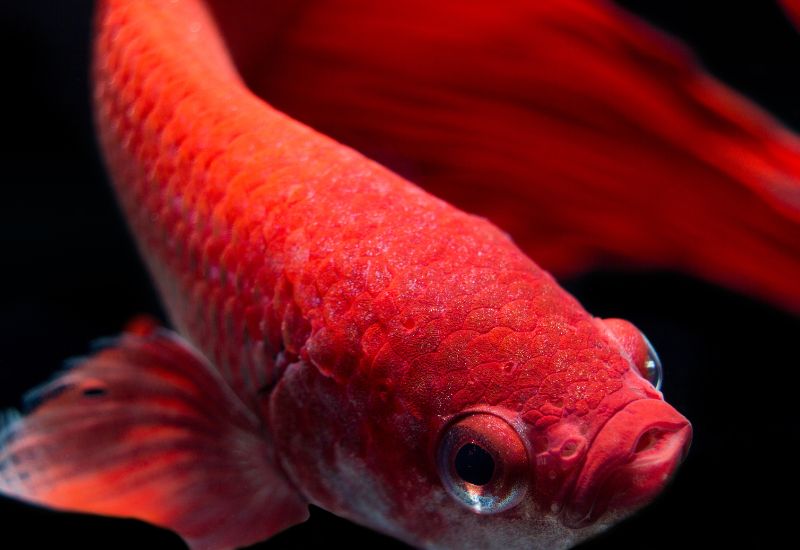
Betta fish may not sleep like other animals, but betta fish take their sleep to rest. The sleeping pattern is different because fish do not have eyelids, so we cannot tell if the fish is sleeping. Here are some points that indicate your betta fish is sleeping:
Low Response Rate
When your fish sleeps it will look like it’s out or daydreaming. The response rate will be reduced, regarding movement happening in their surroundings.
Pale Color
There can be different reasons for the color dullness of your fish. One reason can be that your fish is sleeping. When betta fish are sleeping, their color looks dull, which is noticeable.
Resting Position
While sleeping, some betta fish can float on the surface while others can secure a spot on the substrate. The fish can be seen lying on the leaves. There are sleeping nets available in the market for your betta fish. You can buy one.
How Long Betta Fish Can Live

Betta fish are famous because of their vibrant colors and have 70 different species. The life span of the fish varies. In the wild, the lifespan of betta fish is different from that of captivity. Here is a guide on betta fish life span:
The lifespan of the Betta Fish
In the wild, the betta fish can live up to 2 to 3 years. The fish is native to South Asia and lives in warm shallow water.
Betta fish can live longer in captivity. The life span of the fish in captivity is 4 to 5 years. The longest age of betta fish is recorded as ten years. In captivity, betta fish have no fear of predators, availability of food, and care.
Factors Affecting the Life Cycle of Fish
Here are some points that can influence the lifespan of your fish:
Environment
Betta fish are slow-water fish and cannot survive in high currents of water. That will damage the delicate fins of the fish. Try to provide them with an environment where fish can control the water speed.
Genetics
Like humans, strong genetics play an important part in the life of betta fish. Good genetics provide them with good protection from common diseases.
Tank Size
The aggressive personality of fish makes people confused that betta can live in small spaces. Fish need space to swim and explore. A tank with a capacity of at least 5 gallons is recommended. Small spaces can put your fish under stress and weaken their immune system.
Lighting
The amount of light plays an important role in the life of the fish. Fish need 10 to 12 hours of light. Make sure to set a timer on the lights to form the cycle of day and night. The exposure of light can cause the growth of algae in the tank.
Diet
Give your betta fish food that contains 35% to 40% protein. Most betta fish food contains high amounts of fat that makes them slow and lazy. Give your best quality
food for a happy and long life span.
How Long Can Betta Fish Go Without Food?
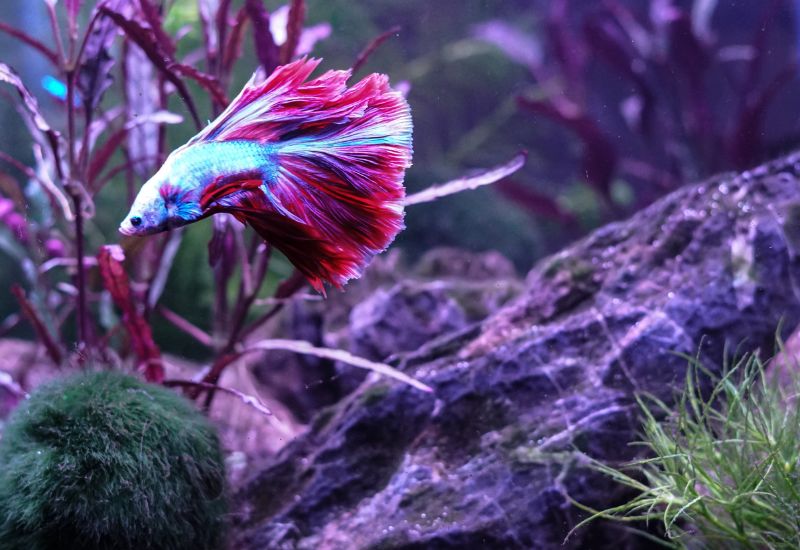
Betta fish are carnivorous fish. In the wild fish eat insects, crustaceans, and larvae. In the wild, they cannot find food daily. The fasting is normal for betta fish. In the aquarium people maintain their habit of fasting this will not only improve their health but also make their immune system strong. Betta fish can go without food for 10 to 14 days. Feeding your fish is essential. After 4 days fish will start starving and that will impact the health of the fish.
Environment plays a massive part in the fasting of fish. If the environment is good, water quality is great and you have a good filter fish can go without food and that does not negatively impact the health of fish. But if the water is bad, and the filter is clogged, then your fish will get sick and die soon.
Betta Fish Not Eating
There can be several reasons why your betta fish is not eating. Let’s find out:
Overfeeding
When your fish is not eating, overfeeding can be the reason. Betta fish stomachs are the size of their own eyes. New aquarists overfeed them by not determining their food quantity. Do not overfeed your fish. Provide the food that your fish can eat within 2 minutes.
Stress
Stress can be the reason that your fish is not eating. Stress can be due to different reasons. Aggressive tank mates, bad water quality, fewer hiding places, and plants. You can reduce the fish stress by tackling all these issues.
Sickness
The other reason for not eating food can be sickness. When fish are facing some diseases their appetite goes away. Check for the other symptoms to assess what kind of diseases fish might have. In common fish have constipation, dropsy, fin rot, ICH, and velvet.
Poor Water Quality
Poor quality can be the reason for the loss of appetite in your fish. Poor water quality changes the pH level of water and increases the amount of ammonia, nitrite, and, nitrate. Check the water quality of the tank to provide a good environment.
Betta Fish Behavior Before Death
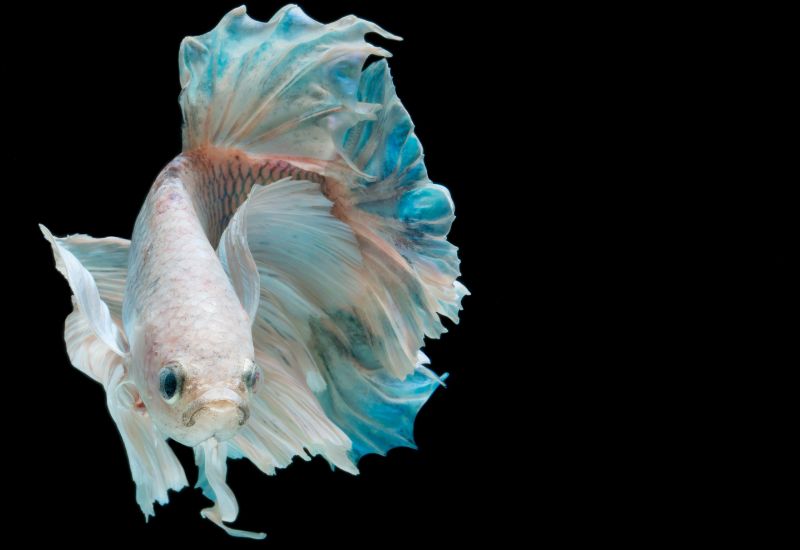
There are different patterns of betta fish before dying. You can notice your fish hanging vertically in the aquarium. The vertical floating of the fish can be due to overfeeding, bad water quality, or poor diet. You can address the situation by giving daphnia to your fish or adding an API stress coat to the tank.
Another sign can be loss of appetite in the fish. There can be different factors causing it. Poor water quality, aggressive tank mates, bad environment. You can address the issue by eliminating all these reasons.
A change in the color of the fish can be a sign that your fish is sick. There can be other factors like less lighting, poor water, or old age. If your betta is an adult, then you might want to take him to the doctor for further assistance.
Betta fish is a surface fish. If your fish is hiding all the time, that can be due to different reasons. Bad water, aggressive tank mates, sickness. Tackle the situation by eliminating all factors, to provide good health to your fish.
Swelling of the eye is a common change before death. The reason can be bullies in tanks or sharp objects. Remove the bullies from the tank and look for any injury. Treat your fish well, add salt to the water, and remove all harmful objects.
Betta Fish Care

Betta fish are famous house pets for their beautiful colors. Fish are low maintenance but still need care and attention for a happy and healthy life. Provide your betta fish with at least 5 gallons of water. Your fish needs space to swim and explore. Betta fish like hideouts. Add plenty of plants and caves as per the needs of your fish.
Betta fish are warm water fish that cannot live in too hot or cold water. Cold water will reduce their immune system and hot water will age them fast. Check the parameters of the water to provide good quality water. Install the heater to manage the water temperature.
Filter in the tank is essential as it eliminates all toxic chemicals from the water. There should not be any ammonia or nitrite in water. Betta fish are aggressive due to their territorial behavior. Do not add two male bettas in one tank. Fish can live with other species of fish.
Before adding, match the compatibility of both. Install lights in the tank to form a cycle of day and night. Do not overfeed your fish, as it can cause many aquarium and health problems.
Common Diseases and Treatment
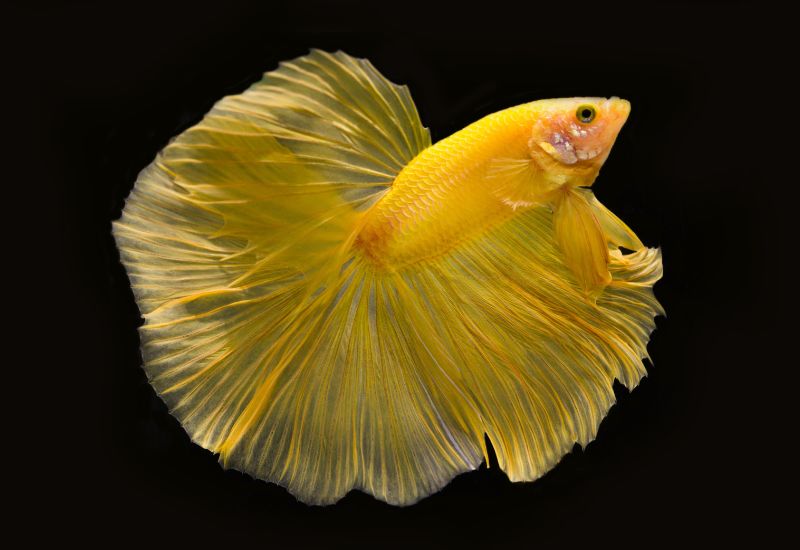
There are different common diseases of betta fish. Here is the list:
Columnaris
The disease is also known as cotton wool or mouth fungus. In the tank, both beneficial and bad bacteria exist. Due to bad water quality or an overcrowded tank, bad bacteria can add to your fish and cause cotton patches on the gills, mouth, and fins of the fish.
Treatment
The illness can be treated by addressing fungal infections. You also reduce the crowd and bioload from the water. Focus on other factors, like oxygen level and hardness of water.
Dropsy
Dropsy is a deadly disease that affects the kidneys of the fish. The symptoms can be the swelling of the abdomen and scales shaping as pinecones. You can prevent it by keeping the water clean and feeding your fish vitamin-rich foods.
Treatment
There is treatment for dropsy. But Betta Revive can help in this condition.
Pop Eye
This disease causes swelling in one or both eyes. It can be due to a tumor, viral infection, or bacteria. You can prevent it by keeping your water clean.
Treatment
The survival rate of this disease is good. You can use Tetracycline antibiotics.
Mouth Fungus
It is a bacterial disease and causes lines and clumps around the mouth and gills of the fish. You can prevent it by keeping water clean.
Treatment
You can use antibiotics to reduce the infection. For example, Amoxicillin antibiotics.
Conclusion
Betta fish is the most common aquatic pet in households. The fish is famous because of its variety of colors. Male betta and female can be distinguished by behavior. Females can live in the community, but you cannot keep two male bettas in one tank. Betta fish are easy to care for but require good water quality. There are different high-quality dried and frozen foods that you can feed your fish.
You can use flakes as a staple food. Betta fish are surface feeders that choose food that does not sink quickly. Betta fish are aggressive but can live peacefully with other species under the right circumstances. For a healthy and long life span provide a good environment. Check the water quality and provide hiding spaces. Monitor your fish for any stress or illness.
